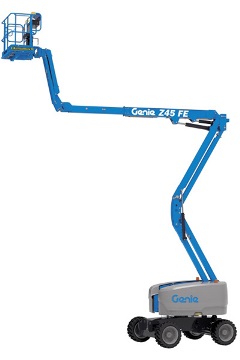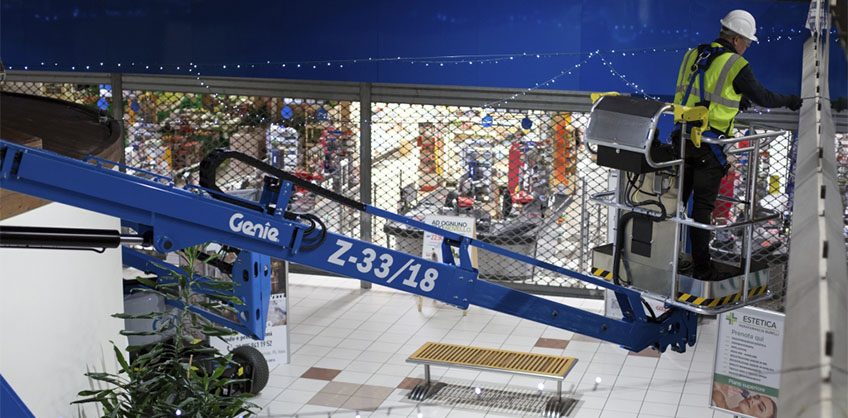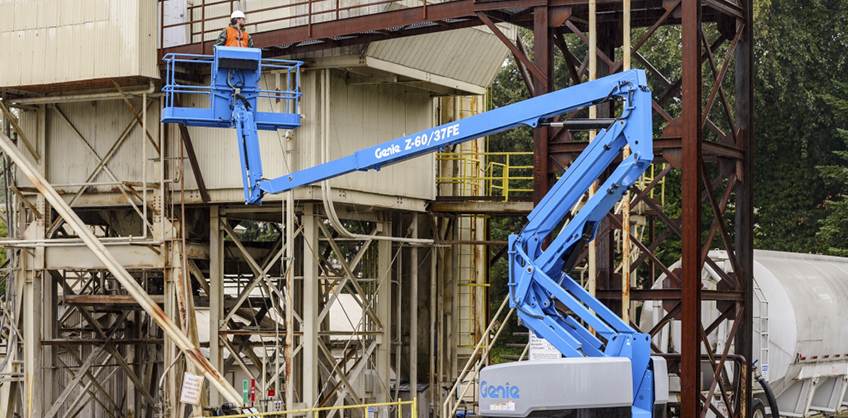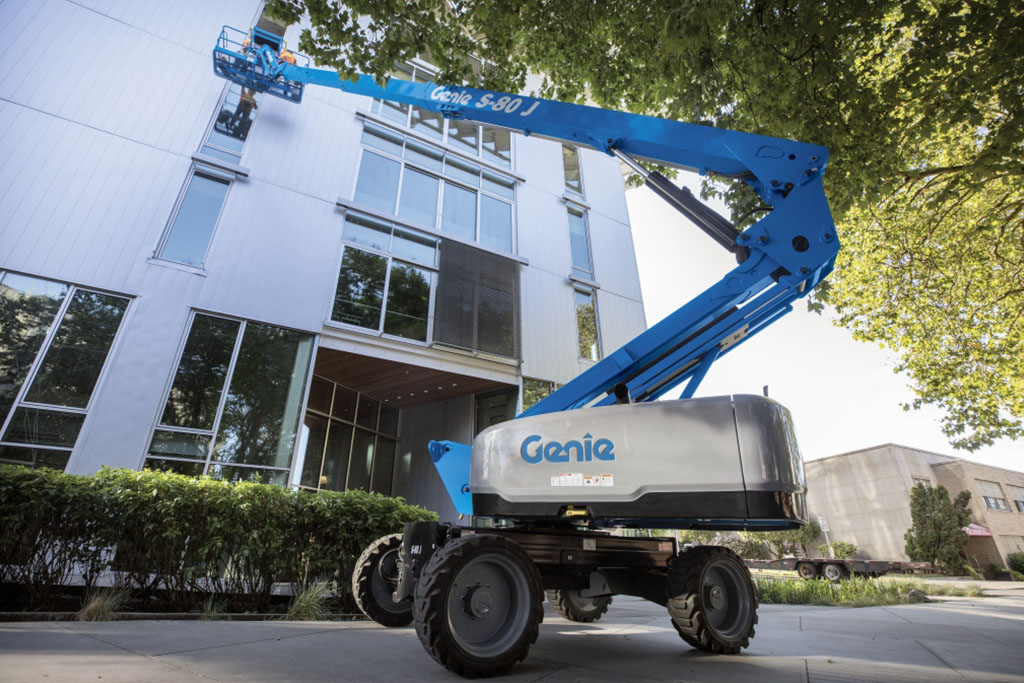Changes to Genie® Booms You Need to Know About
by Sean Larin - Product Manager On May 20, 2021, 03:00 am
Subscribe To Aerial Pros
Filter by tags
When the new ANSI A92 (United States) standards go into effect, driving alignment with ISO standards globally (including European EN280, Australian AS 1418.10 and Canadian CSA B354 standards), it will impact the way Genie® aerial access equipment is designed, manufactured, maintained and operated globally.
What’s Changing?
ISO standards incorporate requirements from the European EN280 and Australian AS 1418.10 standards, which call for several big changes in to aerial work platforms (AWPs), which will now be known as mobile elevating work platforms (MEWPs), to now be included in North American aerial equipment. For example, under the ISO standards, features, such as platform load sensing and dynamic terrain sensing, will now be incorporated into the design of articulated and telescopic boom lifts worldwide.
Because all Genie boom lifts are manufactured in compliance with global standards, it’s important to prepare your business — and your customers — for what’s changed. 
Load Sense
Following in the footsteps of EN280, the European industry standard in effect since 2001, all Genie articulated (Z®) and telescopic (S® ) booms will now be equipped with platform load sense.
Also known as an overload system or load sense system, the platform load sense system assesses the weight of operators and equipment in the work platform and will only allow machine operation if the total load is within the rated capacity of the boom.
Equipment with a load sensing system will monitor the weight in the work platform and disable functionality if the boom’s rated capacity is exceeded.
Essentially, it means that the machine will only allow operators to move and place loads that are within the rated capacity of the boom’s platform.
- What happens with the boom’s platform is overloaded?
- The engine will shut down
- An audible alarm will sound
- An indicator light on the control panel will begin flashing
It is important to know that all excess weight must be removed from the boom’s platform before normal function can resume.
Since this may be the first time your employees or your customers have had to think about what happens if the platform is overloaded, here’s a quick summary of what you all need to be aware of: There are two ways to overload a platform…
- First, too much weight in the basket before it leaves the ground.
- And second, by adding weight to the basket once it is in the air working.
Everything — including number of people in the basket, their clothing and personal gear, as well as tools and jobsite materials — contributes to the weight in the platform.
Also, remember to be aware of weight added to the boom’s platform during operation. For example, if the boom touches part of the building or structure it is working near, such as a beam or window ledge, that weight from the structure also counts toward the platform’s load capacity.
Again, it is important to know that everything will be counted in the platform load sense calculations as it compares the platform’s capacity to the machine’s load chart.
What can operators do to prevent overloading the platform? Understand the weight of the load being placed in the platform before operation — and on the platform during operation.
Dynamic Terrain Sensing
Genie booms will also now be equipped with a chassis angle sensor, which measures the angle, or tilt, of the machine’s chassis during operation. Although tilt alarms have been used in the industry before, Genie booms equipped with this new chassis angle sensor will respond differently than previous models.
Here’s how: With this sensor, when the machine is working on a slope, if it reaches — or exceeds — the boom’s rated tilt angle, an alarm will sound to alert the operator. This audible alarm means that the machine has reached its tilt sensor activation setting — or, in other words, the boom has exceeded its tilt angle.
At this point, the machine will automatically restrict certain drive and boom functions, requiring that the operator safely return the machine to a ground slope that is within the boom’s operating range. This functionality is similar to technology already used on many scissor lift models currently available in the North American market.
Additional Changes
In addition to the big changes already mentioned, there will be many seemingly smaller, but just as important, alterations to pay attention, including:
- Caution tape around the counterweight and platform toeboards
- 4-in (10.16 cm) toeboard in platform entrance gates
- Side force rating not to exceed 90 lb (40.8 kg)
- Working angle on select models will go from 4.5 x 4.5 ° to 2.5 x 4.5°
- There are exceptions to these specifications
- Before operation, please refer to your boom’s Operator’s Manual for information specific to your model
- On the Lift-Tilt-Drive Interlock feature,
- When in “out of stowed” configuration, and the boom is tilted, drive will be restricted in the direction creating the off-level condition, and the lift function impacted
- When in “stowed” configuration, and the boom is tilted, lift function will be restricted
- A new decal on lanyard points will indicate the unit’s fall arrest rating
- A new annual inspection decal under the hood
- Serial plate changes include the unit’s maximum rated slope, as well as its regional standards certifications
- New printed manuals will be included with each boom
- Air-filled tires will now only be available on Genie high float (HF) models
With the implementation of the ISO standards to all Genie boom models, these big and little are intended to provide equipment owners and operators with the latest advancements in safe work at height solutions — solutions that get people safely to aerial work spaces, keep them safe while they complete the aerial work and safely get them back down. At Genie, we continue to evaluate and manufacture our products to meet the most current industry standards globally. This our guarantee to our customers that we will continue to provide the best safe work at height solutions possible.
Related Posts

Small Booms, Big Productivity
With many size classifications of boom lifts available, understanding key features and benefits offered by each size of machine can help you ensure the right lift for the job, maximizing productivity.
Continue Reading

The Right Boom Lift Option for Any Jobsite Need
Every jobsite has its unique challenges and requirements; there is a lot of variety in the type of work that end-users are doing. For rental companies that serve customers in a range of industries and trades, there is no “one-size-fits-all” approach when it comes to their equipment fleets.
Continue Reading


